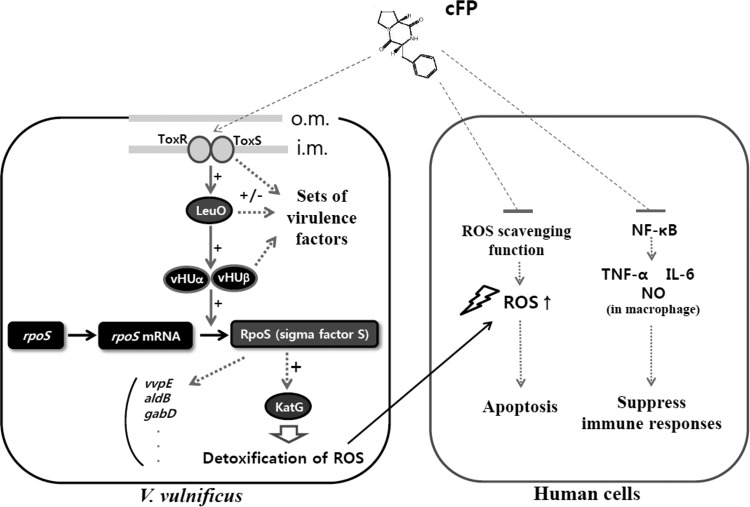FIG 10.
Role of cFP as a virulence factor while in the host and also as a signal to induce expression of genes to protect the pathogen. cFP produced by V. vulnificus suppresses the immune response of human cells by inhibiting nuclear translocation of NF-κB (32). It also suppresses regulators responsible for the expression of ROS scavengers, resulting in higher intracellular ROS levels in human cells and ultimately leading to apoptosis (31). The enhanced ROS production in human cells could cause damage to the cognate pathogen. However, cFP also acts as a signal to trigger a signal transduction pathway in the pathogen composed of ToxR-LeuO-vHUαβ. This signaling cascade stabilizes the mRNA of the alternate sigma factor RpoS. RpoS induces transcription of katG, encoding a peroxidase that detoxifies ROS, thereby protecting the pathogen. cFP signaling also controls the ToxR, LeuO, vHUαβ, and RpoS regulons, leading to modified regulation of numerous genes, which could be responsible for V. vulnificus pathogenesis; i.m., inner membrane; o.m., outer membrane.

